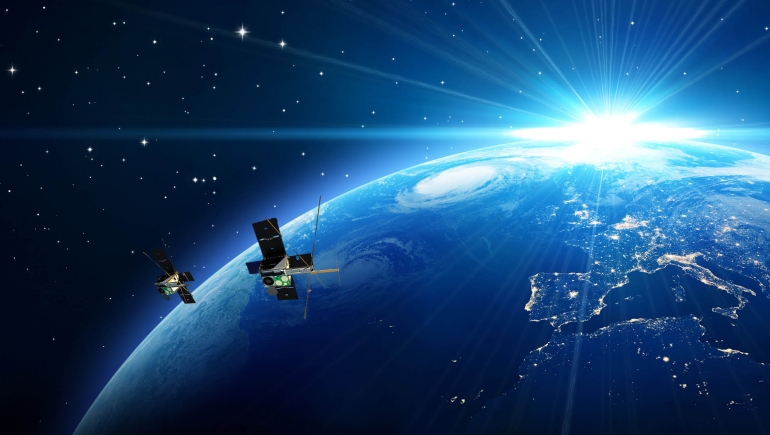
Artist’s impression of the twin M2 CubeSats orbiting the Earth
A joint UNSW Canberra Space and RAAF CubeSat mission has rocketed into orbit to test Earth observation, maritime surveillance and communications capabilities.
The home-grown M2 satellites were successfully launched on 23 March from New Zealand aboard Rocket Lab’s ‘They Go Up So Fast’ mission.
One of the mission’s main objectives is to test formation flying, as the craft has the ability to split into two separate satellites (M2- A and M2-B) that can orbit in sequence, giving controllers more mission flexibility.
Another feature is the ability of the craft to process information on board using advanced AI techniques, which can be reconfigured throughout the flight.
“The M2 mission is one of the most complex CubeSat programs ever attempted. It will enable both UNSW Canberra Space and the RAAF to gain experience and capability in the development and operation of in-orbit space science and technology missions,” said UNSW Canberra Space Director, Professor Russell Boyce.
According to Professor Boyce, the mission will help to develop Australia’s space sector, which, he ways, will be integral to solving the challenges the country will face in the future.
“As we depend on space infrastructure for resource management, secure communications and data collection during extreme weather events and bushfires, building our sovereign space capabilities is critical for Australian security,” Professor Boyce said.
For Air Vice-Marshal Cath Roberts, Head of Air Force Capability, the CubeSat’s formation flying capability is one of its most exciting features.
“The two satellites will be able to communicate with each other, as well as ground stations back here on Earth, giving better quality data, with greater detail and less lag time — all fundamentally important for Australia’s defence,” said Air Vice-Marshal Roberts.
The mission was almost completely designed and built in Australia and is backed up by a domestic supply chain of 30 companies. Support also came from Aperture Optical Sciences of Connecticut, USA, which developed the craft’s optical telescopes.
M2’s launch comes less than a year after the launch of the M2 Pathfinder Mission, which was sent into orbit by Rocket Lab in June 2020 to de-risk and test technologies to be used by M2.
“The M2 Pathfinder successfully tested various in-house technologies, including on-board computing, attitude control, GPS, optical imaging, communications and flight software,” said UNSW Canberra Space’s Spacecraft Project Lead Andrin Tomaschett.







